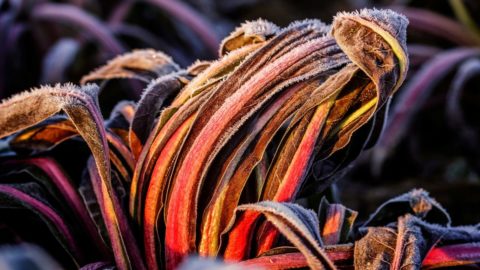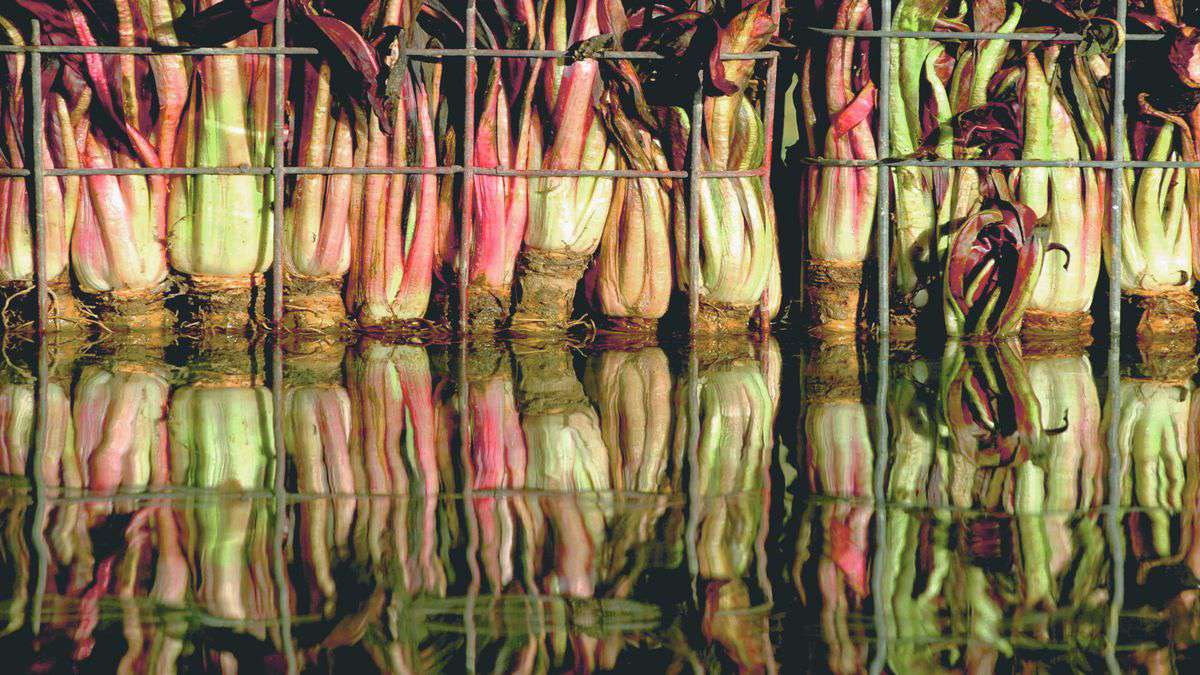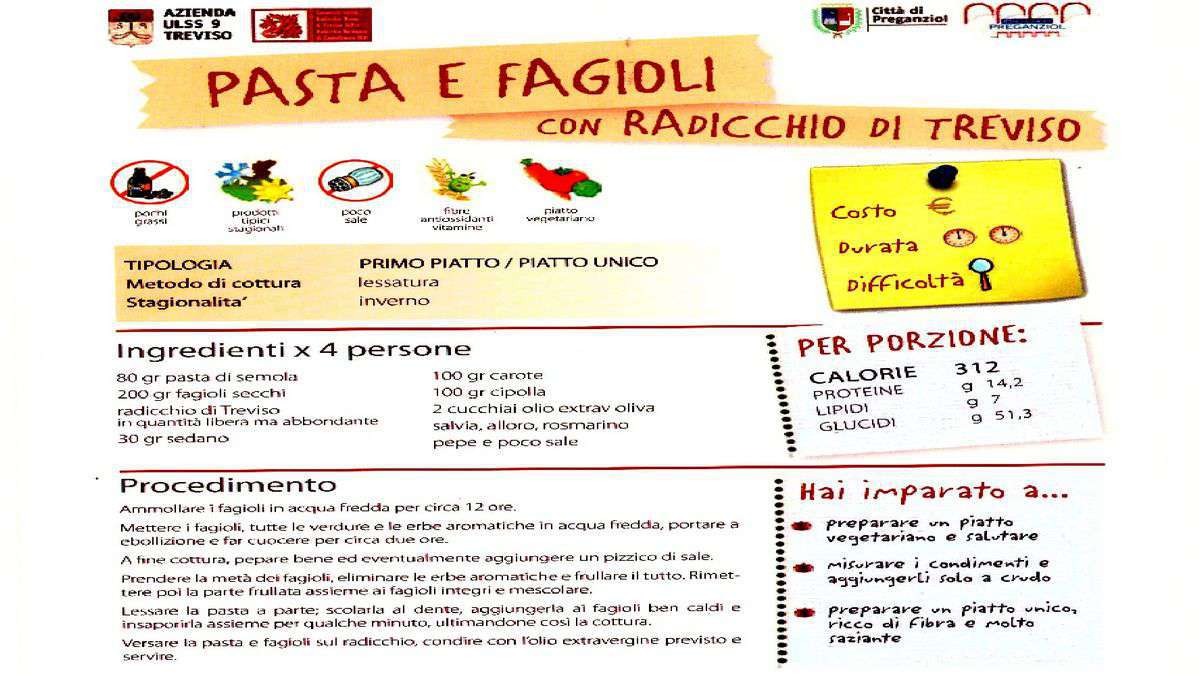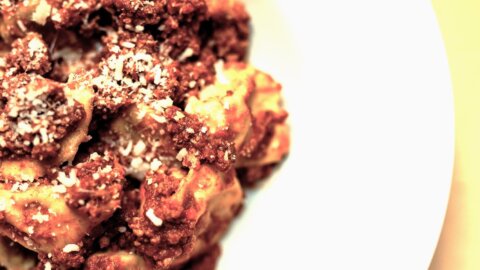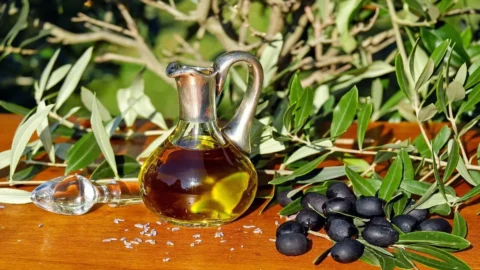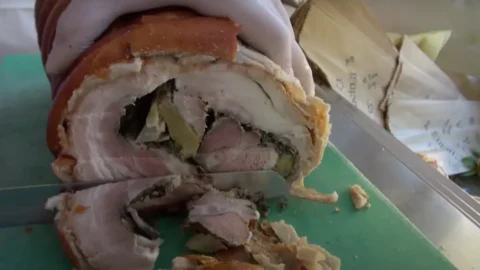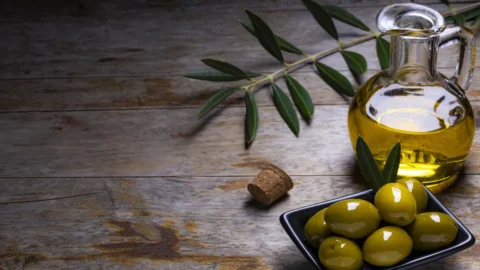It can be said that he has quarters of artistic nobility: in fact, he had the honor of having been depicted in a famous painting by Leandro dal Ponte, known as Bassano, "The Wedding at Cana" exhibited in the Louvre. And the Late red chicory of Treviso, which, like Cinderella, from humble chicory of the fields has become a gourmet delicacy for refined tables. The discovery is due to prof. Tiziano Tempesta of the Department of land and agro-forestry systems of the University of Padua engaged in a survey of the agricultural landscape of the Veneto region which also included the examination of ancient paintings of landscape views. Having gone to the Louvre in Paris to study some landscape painters, prof. Tempesta, having arrived in the hall of the Italian Renaissance (the hall of the Mona Lisa by Leonardo), looked up and came across Bassano's "Wedding at Cana".
His curiosity was attracted by a clump of vegetables that was in a corner of the picture “which fell to the floor from a wicker basket filled with fruit and vegetables. It was unmistakably Radicchio rosso di Treviso. You can see - underlines Tempesta - the long white veins and the reddish leaves, you can also see the taproot cut at the base. The professor. Looking at the painting, Pimpini from the Faculty of Agriculture of the University of Padua confirmed to me that it is most likely red radicchio from Treviso”.
And that's not all, because “Treviso radicchio also appears in two other works conserved at the Galleria Sabauda in Turin, one by Francesco and the other by Leandro da Ponte. These are two large market scenes in which, among many other products from the countryside, there are baskets full of radicchio which has a head shape very similar to the one we are used to seeing today".
The artistic premise was mandatory to state that the Radicchio rosso di Treviso has been a vegetable since the 500th century, closely linked to the agricultural and gastronomic history of the Treviso area: has enriched their tables with tasty flavors over the centuries and has been reciprocated with the love and pride of a population that has made it one of its elective products so identifying the territory that since the last century they have dedicated parties, festivals and exhibitions that last from the end of November until March.
In fact, the first Treviso red chicory exhibition dates back to 20 December 1900, organized by Giuseppe Benzi, an agronomist of Lombard origin who moved to Treviso in 1876 as a teacher at the Riccati technical institute and who became head of the Trevigiana Agricultural Association with which on December 20, 1900, he inaugurated the first exhibition dedicated to the red chicory right under the Loggia in Piazza dei Signori . And since then the exhibition has been repeated punctually every year, with the exception of two occasions: during the great war, when Treviso will, in fact, find itself on the front line, and in the last two years of the Second World War.
In this regard, it must be said that the radicchio we know today is descended from a spontaneous species called “Cichorium Intybus L.” known since the dawn of time, as wild chicory. It was the continuous changes made by the people of Treviso with additions, variations, sometimes studied, sometimes spontaneous, and laborious processes that have ennobled the humble chicory, giving it a taste, consistency and a modern appearance and transforming it into a precious and sought-after quality.
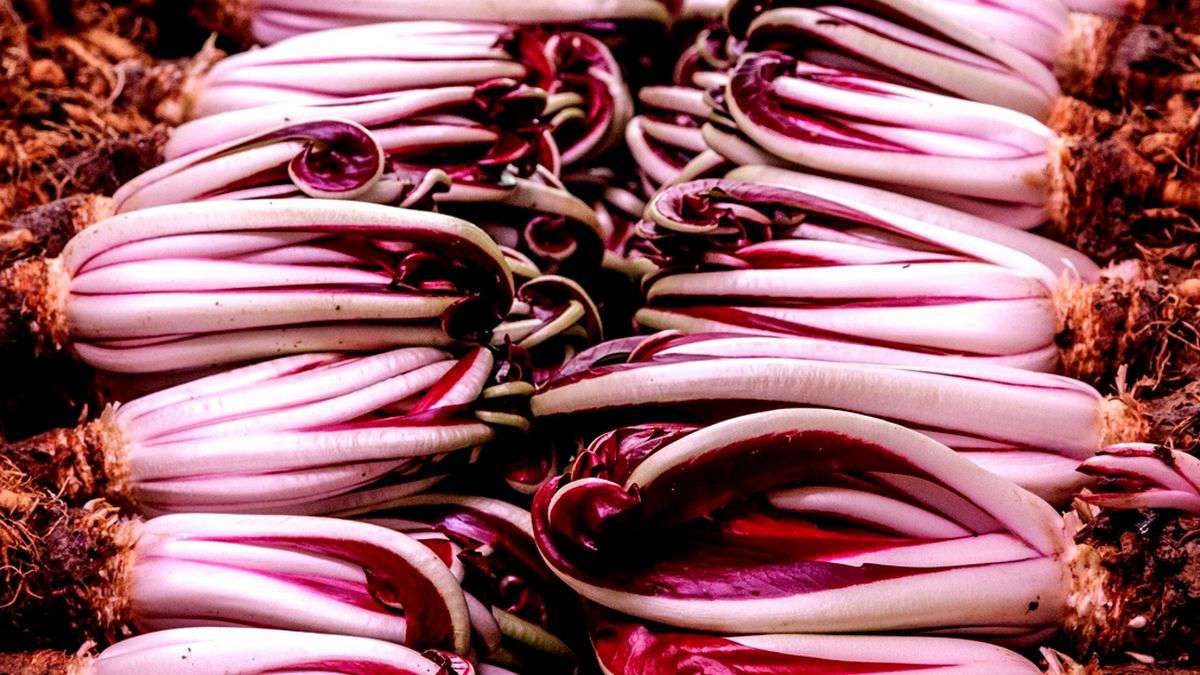
Photo by Stefano Bobini
One hundred years later, Treviso is no longer the only one to celebrate its original vegetables, which have rightfully entered the world of haute cuisine, having been chosen for their pleasant, delicately bitter taste and crunchiness by the greatest starred chefs for their preparations.
Preganziol 50 years of history of SM Il Radicchio
Festivals, fairs or exhibitions have been held or are held every year in Mogliano Veneto, Spesiamo, Martellego, Rio San Martino, Zero Branco, Mirano, Dosson di Casier, Roncade, Quinto di Treviso.
After that of Treviso, it is up to the Municipality of Preganziol, where the cultivation of this variety has historically developed, the merit of keeping the insignia of SM il Radicchio Rosso high for 50 years. Now in its 49th edition, the Preganziol Treviso PGI red radicchio exhibition celebrates a particular variety of the precious vegetable from 17 to 19 January, the Radicchio Rosso Tardivo, the most prestigious and aristocratic quality which requires weeks of patient manual processing to achieve a concentrate of flavor unique in the world, an elegant and supple shape, before ending up on the tables of gourmets and in the kitchens of great chefs.
The Red Radicchio of Treviso PGI it comes exclusively from the area between the provinces of Treviso, Padua and Venice. Cultivation follows precise rules and this also makes it clear how laborious and demanding its preparation is: According to the production disciplinary, harvesting from the open field can only begin after the plants have undergone two frosts. After the collection there is a premiere “Preforcing” – which normally takes place from the beginning of November – in this phase bunches of 25-30 plants are formed (still with their taproot or root) which are traditionally arranged on two furrows, protected from low temperatures thanks to small tunnels covered with a sheet of plastic material.
Then there is the phase ofbleaching during which the bouquets are placed in tanks filled with running resurgence water at a constant temperature (12-15 degrees) for about fifteen days. In water, the vegetation process resumes but in the absence of light, which prevents the plant from producing chlorophyll (hence the typical color and the softening of the bitter notes of chicory).
So once the new shoots are obtained, we proceed with the finishing, with the pruning of the bunches of radicchio in heated rooms followed by the grooming, i.e. washing and packaging. Once ready, late red chicory has the typical lanceolate shape, with regular and compact shoots that tend to close at the apex. The leaf blade acquires an intense vinous red color, with just hinted veins with a rather thick white dorsal rib. Its unmistakable shape makes it extremely elegant and refined in appearance, unique in flavor with its pleasantly bitter and crunchy taste.
There has been much discussion about the origins of Treviso red radicchio. A long-accredited thesis gives credit to such Francis Van den Borre, Belgian botanist, expert in setting up parks and gardens who came to Treviso from Belgium in 1860 to create an English garden annexed to the eighteenth-century Villa Palazzi. His experience also in the bleaching techniques already in use for a long time for Belgian chicory, would therefore have influenced the cultivation of red radicchio by some Treviso growers. But there is no concrete evidence of the fact. What is certain is that Francesco's son, Aldo Van den Borre in a text from 1924 he exalted the goodness of Treviso radicchio with enthusiastic words: “Here is a herb that is a flower. Treviso prides itself on this magnificent vegetable, which is the work of its land, its climate and its illustrious and patient people. There is chicory everywhere. But the herb of Theophrastus, the kasni of the Hindus, the red root of Milan, the kaiserscichorie of Berlin, the Witoof of Brussels, the archicoria of the Escurial, the Christmas salad of London have nothing to do with the Treviso radicchio: If you look at him, he's a smile If you eat it, it's heaven Treviso radicchio!”.
We arrive at a real naturalistic aesthetic elegy with Elio Zorzi author in 1928 of "Osterie Veneziane" which talks about it in these terms “Treviso radicchio is an edible flower: when it is brought to the table without first being seasoned, it looks like a bunch of orchids in a precious porcelain bowl in a homemade salad bowl”.
The other version, less noble and more down to earth, attributes the merit to the peasants, who with the arrival of winter, having kept the radicchio in the stables, realized that instead of rotting some radicchio hearts remained good and crunchy and that having spring water available to keep them always fresh, they would have started this original form of cultivation.
Then there are the legends handed down by the local farmers. Someone speaks of birds that dropped the seed of this special plant on the bell tower of the village of Dosson in very distant times and that the friars would then have preserved and cultivated; still others tell of a plant that grew spontaneously along the ditches and on the edges of the vegetable gardens until a farmer discovered the possibility of transforming it into crunchy radicchio thanks to the bleaching technique.
Versatility in the kitchen is its forte, due to its particular taste it is used more and more in appetizers and canapés combined with cheeses, it can be prepared raw as a salad, cooked in risottos and in condiments for sauces to be used to season pasta or as a filling of ravioli or to characterize, with its flavour, tasty baked pasta, it is as savory as it is needed to give flavor to savory pies, it recurs in many traditional dishes such as bean soups or polenta, it is excellent as a side dish, dried, in oven or pan. When it was considered only a humble chicory it was fed to animals. Even its roots have long been used, dried and roasted, as a substitute for coffee.
Rich in nutrients like a traveling pharmacy
Whatever its origins, it must be said that Treviso red chicory is not only beautiful to look at or exceptional in taste, but also gives our body important nutritional principles, it can be considered a real itinerant pharmacy. First of all, it is an excellent anti-aging remedy being rich in antioxidants which slow down the cellular aging process. Then it is also a powerful anti-inflammatory indicated for those with skin problems (pimples, sores), arthritis and rheumatism. It has a low calorie content (92-94% is made up of water), a food that is also very suitable for controlled diets and diets and is rich in Vitamin A, B1 e B2.
From studies carried out at the University of Urbino it seems that red radicchio contains many more antioxidant substances than more famous foods for this property like blueberries and raisins. In addition its intake contributes to prevent the onset of certain types of cancer, especially in the intestine. He's also notable purifying properties and, thanks to the high water content, the presence of fibers and bitter principles, it favors digestion and the proper functioning of the intestine;. The calcium and iron present in red radicchio are capable of promote bone metabolism making them stronger; the anthocyanins present in red radicchio have preventive properties against cardiovascular diseases, while, tryptophan, brings benefits to the nervous system by counteracting insomnia-related disorders.
Returning to Preganziol, it should be emphasized that the Treviso town has always dedicated energy and attention to the Late Red Radicchio Exhibition born in the late 60s, in a period in which the primary sector in the area was still the main economic support for families . The producers of the time, strong in being right in the area where the refinement of this vegetable came to life and aware of the need to have their own exhibition in order not to be "in the shade" compared to the other producing areas, decided together with the Pro Loco and the Municipal Administration, to give life to an independent Market Exhibition, compared to the only one existing at that time, namely that of Treviso.
Over the years, the exhibition venues have changed and evolved following the urban development of the city. On several occasions the exhibition has had the honor of being set in the spaces of the superb Villa Franchetti (https://it.wikipedia.org/wiki/Villa_Franchetti), a historic eighteenth-century patrician residence which has hosted illustrious artists and writers over time, including the sculptor Antonio Canova, Ippolito Pindemonte and Ugo Foscolo, who began to compose the "Sepolcri" right here.
Pro Loco and the Municipal Administration have always been committed to enriching the exhibition with cultural and social contents in step with the times, giving it a connotation of witnessing the evolution of the territory in all its aspects. Since 1996, the year in which the Treviso radicchio consortium was established (http://www.radicchioditreviso.it/il-consorzio/ ) and the year in which the prestigious IGP recognition was obtained (the first Italian vegetable to be included in the list of fruit and vegetable products protected by the European Union), the Preganziol Exhibition promoted the IGP product, thus aiming to enhance and protect local farmers Treviso in the most distant and most difficult markets. Furthermore, in parallel with the exhibition and promotion of the product, various actions have been launched which link red chicory as a value of the territory and of citizenship. This is the case of the solidarity lunch (in which, among other things, a classic of local gastronomy is served, pasta and beans with Treviso radicchio) for the construction of a structure for the elderly, exhibitions in schools so that traditions are not forgotten or conferences so that the evolution of agriculture can be in the public domain.
But the most demanding challenge remains that of combining the tourist development of the Bassa Trevigiana strongly linked to Venice, with the need to pass on traditions and make known the excellences that distinguish these areas so rich in history, culture and interesting and original peasant and food. (Head photo Stefano Bobini)

